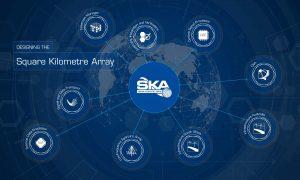SKA passes overall design review

After six years of work involving hundreds of engineers and scientists in 20 countries and close to 300 institutions around the world, the SKA’s overall system design – how all parts of the SKA work and interact with one another -, costing & planning has been endorsed by a panel of leading experts from ESO, NRAO, LSST, Gemini, NSF, Berkeley & Caltech universities, representing some of the biggest astronomical facilities in the world.
“If you look at what has been achieved in the last few years it is really quite remarkable,” said Dr. Adrian Russell, Chair of the Review Panel from ESO “This year in particular there has been a huge push with […] the design really coming to maturity. Certainly looking from the outside it is very, very impressive.”
After six years of work involving hundreds of engineers and scientists in 20 countries and close to 300 institutions around the world, the SKA’s overall system design – how all parts of the SKA work and interact with one another -, costing & planning has been endorsed by a panel of leading experts from ESO, NRAO, LSST, Gemini, NSF, Berkeley & Caltech universities, representing some of the biggest astronomical facilities in the world.
“If you look at what has been achieved in the last few years it is really quite remarkable,” said Dr. Adrian Russell, Chair of the Review Panel from ESO “This year in particular there has been a huge push with […] the design really coming to maturity. Certainly looking from the outside it is very, very impressive.”
In November 2013, 12 international engineering consortia were created and tasked with designing the SKA. Nine of the consortia focused on the SKA’s core elements, while three others were tasked with developing advanced instrumentation. In late 2018 and 2019 consortia started going through their Critical Design Reviews (CDRs), during which the proposed design for each of these elements had to meet the project’s tough engineering requirements to be approved. The system review was the last major hurdle to be overcome before a construction proposal can be developed.
“They have done a tremendous job of actually getting the consortia to the point where they are able to move forward with the actual construction,” said Dr. Alison Peck, member of the Review Panel from Gemini Observatory.
As part of the design work, international teams have been engaged in building and testing prototypes on the SKA sites in South Africa and Australia, in order to make sure the design can cope with the harsh environment and meet the stringent radio frequency interference requirements on site. That work is ongoing as teams refine the design of the antennas based on lessons learned in the field.
‘The team has really been outstanding and I speak not only of the team here at the HQ but also the broader team from our member institutions,” said Dr. Joe McMullin, Programme Director and Deputy Director-General of the SKA. “Having this milestone is really the foundation for everything in 2020. This is the year where we have to pull together the construction proposal itself.”
Teams will now engage in final preparations ahead of construction, addressing recommendations from the panel. as the new intergovernmental organisation that will oversee the procurement, construction and operation of the SKA starts operating.
“We’ve gotten our wish. We get to continue to move forward on the project and it is fantastically exciting to see this observatory beginning to come together,” concluded Dr. McMullin




